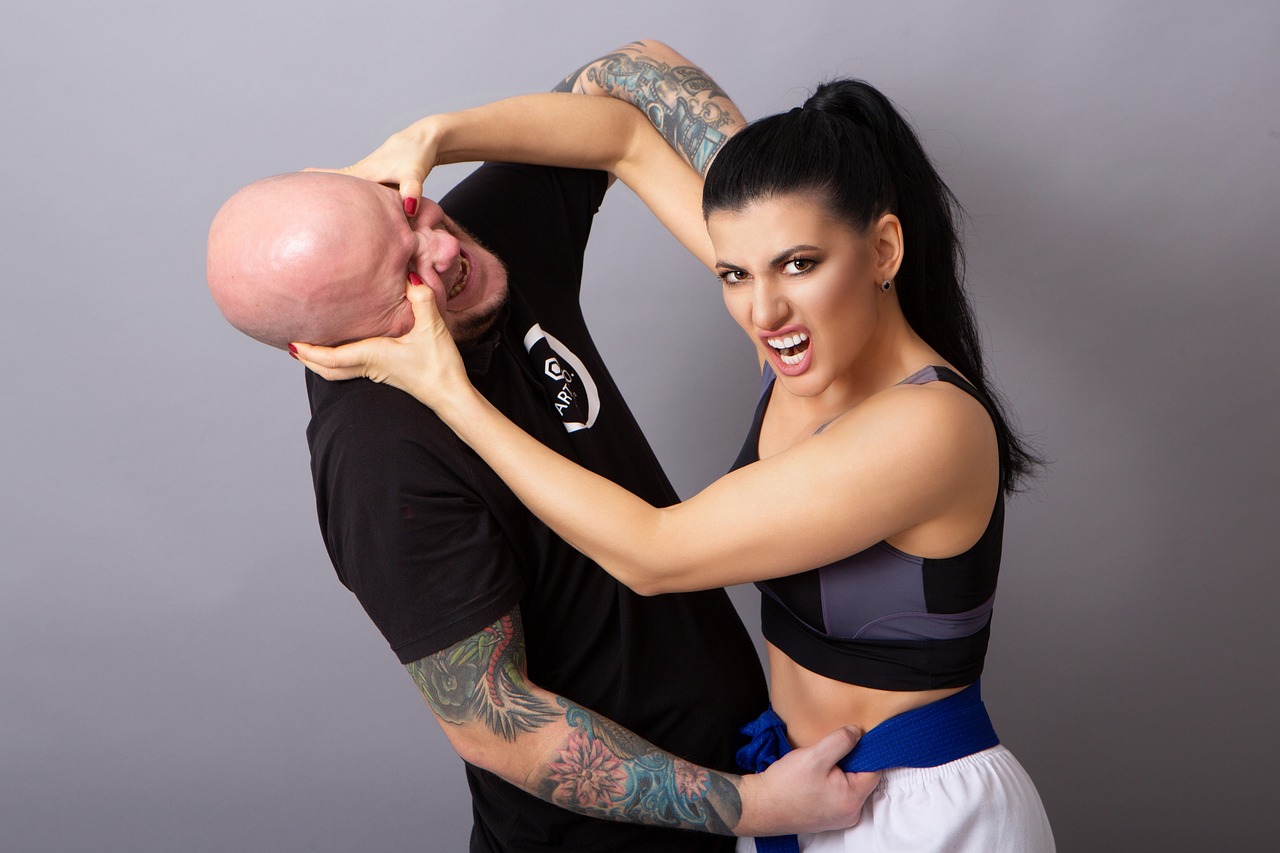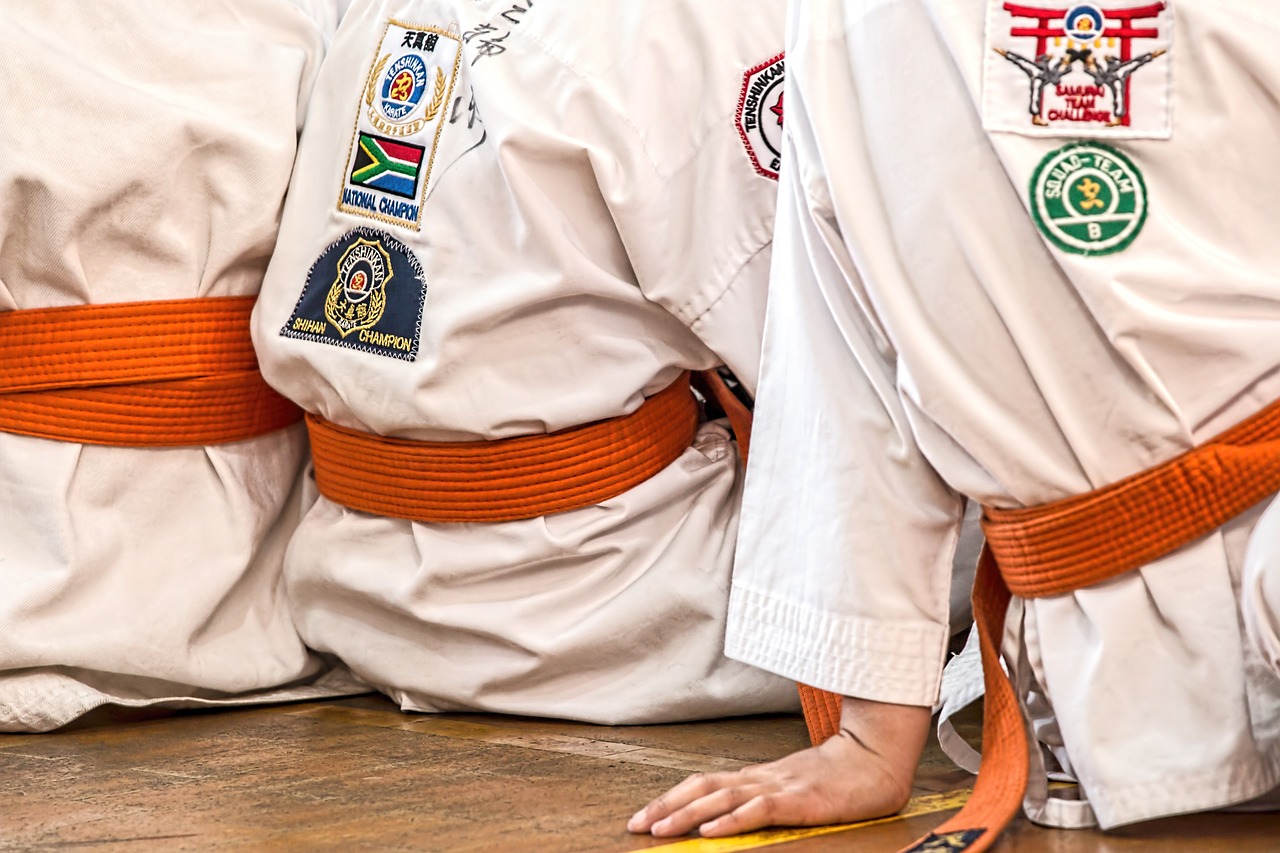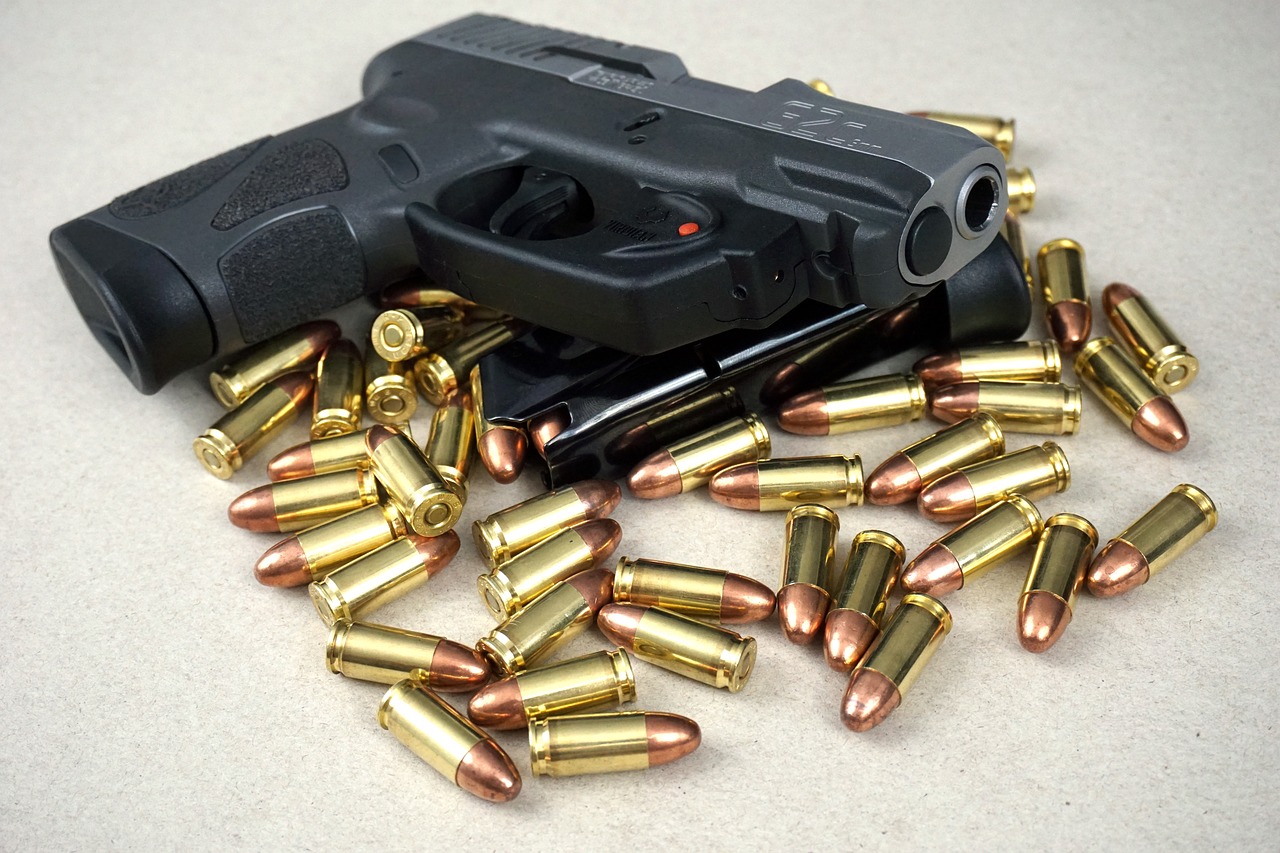Techniques to Overcome the Size Advantage in a Self-Defense Scenario
This article explores various strategies and techniques that individuals can employ to defend themselves effectively, even when facing larger opponents. Understanding these methods can empower anyone to feel safer and more confident.
When it comes to self-defense, facing a larger opponent can feel like standing in front of a brick wall. The psychological and physical challenges posed by someone bigger are daunting, but recognizing these challenges is the first step toward overcoming them. A larger person may have greater reach, strength, and mass, which can create a sense of helplessness in a smaller individual. However, understanding that size is not the only factor in a confrontation can be liberating. It’s like David versus Goliath—where strategy, technique, and mental preparedness play pivotal roles. By acknowledging the size disadvantage, you can prepare yourself mentally, which is crucial in any self-defense situation.
Utilizing leverage and proper body mechanics can turn the tide in your favor, even when facing a larger adversary. Think of leverage as a seesaw; the smaller person can effectively use their opponent's weight and momentum against them. Techniques such as hip throws or shoulder checks can allow you to redirect the force of your attacker rather than trying to match it. For instance, if a larger opponent pushes toward you, a well-timed sidestep followed by a hip throw can bring them crashing down, using their own momentum against them. This approach not only conserves your energy but also highlights the importance of body mechanics in self-defense.
Joint locks are incredibly effective methods for controlling larger attackers. These techniques focus on manipulating the joints of your opponent, rendering them unable to continue their assault. For example, an arm lock can immobilize an opponent, regardless of their size, ensuring your safety. Learning how to apply these locks requires practice, but once mastered, they can be game-changers in a self-defense scenario. It’s essential to remember that control is key; you don’t need to overpower someone physically but rather outsmart them through technique.
Pressure points can incapacitate an attacker quickly and effectively. Identifying and using pressure points in a self-defense scenario can give you the upper hand. For example, targeting areas such as the neck, solar plexus, or behind the ears can create enough discomfort or pain to allow you to escape. Understanding the human anatomy is crucial here; it's like knowing the weak spots on a video game boss. Once you know where to strike, you can turn the tables on a larger opponent, making them rethink their approach.
Throws and takedowns are powerful tools in self-defense that can enable smaller individuals to bring larger opponents to the ground with minimal effort. Techniques such as the judo throw or the leg sweep can be incredibly effective. Imagine a small tree bending in the wind; it may not seem strong, but it can withstand the force and even redirect it. Similarly, by using your opponent's weight and balance against them, you can execute a throw that leaves them vulnerable and you in a position of control.
Being aware of your surroundings can prevent confrontations before they escalate. Situational awareness is like having a sixth sense; it allows you to detect potential threats and avoid dangerous situations altogether. Whether it’s noticing someone following you or recognizing a hostile environment, staying alert can save you from needing to use physical self-defense techniques. Simple strategies such as walking in well-lit areas, avoiding distractions like your phone, and trusting your instincts can significantly enhance your safety.
Striking can level the playing field against larger opponents. It’s not about brute strength; it’s about precision and timing. Effective striking techniques focus on delivering blows to vulnerable areas of an opponent, maximizing your chances of success. For instance, a well-placed jab to the nose or a kick to the groin can incapacitate a larger attacker, allowing you to escape. Remember, it’s not the size of the dog in the fight, but the size of the fight in the dog!
Identifying and targeting vulnerable areas can maximize your striking effectiveness. The anatomy of an attacker reveals several weak points that can be exploited. Areas such as the eyes, throat, and solar plexus are particularly sensitive and can cause significant pain or disorientation when struck. Think of it like a video game where you aim for the enemy’s weak spots to defeat them quickly. By honing in on these areas, you can defend yourself successfully, regardless of the size difference.
Improvised weapons can provide a significant advantage in self-defense situations. Everyday items like keys, pens, or even bags can be transformed into effective tools for protection. For example, a pen can be used to jab at sensitive areas, while a bag can be swung to create distance between you and your attacker. The key is to remain resourceful and think outside the box; it’s all about using what you have at hand to level the playing field.
- What should I do if I encounter a larger opponent? Focus on using techniques that leverage their size against them, such as throws and joint locks.
- Are improvised weapons effective in self-defense? Yes, everyday items can be used creatively to defend yourself and create an advantage.
- How important is situational awareness? Extremely important! Being aware of your surroundings can help you avoid confrontations altogether.
- Can I learn self-defense techniques on my own? While self-defense classes are beneficial, practicing techniques with a partner or instructor is recommended for safety and effectiveness.

Understanding the Size Disadvantage
When it comes to self-defense, facing a larger opponent can feel like trying to stop a freight train with a paper fan. The sheer size and strength of a bigger person can be intimidating, and the psychological impact can often be just as daunting as the physical. Understanding this size disadvantage is the first step in overcoming it. It’s essential to recognize that while larger individuals may have an advantage in strength, this doesn’t mean you’re powerless.
First, let’s talk about the psychological aspect. When confronted with someone bigger, it’s easy to feel overwhelmed and anxious. This can lead to a fight-or-flight response that may cloud your judgment. Instead of succumbing to fear, you should focus on preparation and mental fortitude. Picture yourself as David against Goliath; it’s not just about size but strategy, confidence, and the will to fight back. Remember, even the most intimidating giant can have a weak spot.
On the physical side, larger opponents often rely on their strength, which can be their downfall. They may not be as agile or quick as you are. This is where understanding body mechanics and leverage comes into play. By using their own weight and momentum against them, you can turn the tables. Think of it like trying to push a boulder uphill versus letting gravity do the work; sometimes, it’s all about how you approach the situation.
In self-defense, it’s crucial to recognize that size is just one factor in a confrontation. Being aware of your surroundings and understanding the dynamics of the situation can significantly impact the outcome. For instance, if you find yourself in a potentially dangerous situation, your ability to read the environment and anticipate movements can give you the upper hand. It’s not just about brute strength; it’s about being smart and strategic.
Moreover, we can categorize the size disadvantage into a few key elements:
- Psychological Impact: Fear and anxiety can cloud judgment.
- Physical Limitations: Larger opponents may lack agility.
- Leverage and Technique: Utilizing body mechanics can neutralize size advantages.
By understanding these aspects, you can prepare yourself mentally and physically for a confrontation. The goal is to shift your mindset from feeling like a victim to feeling empowered. After all, it’s not about how big you are; it’s about how smart you fight. Embrace the challenge, and remember that knowledge, awareness, and technique can often outmatch size and strength.

Leverage and Body Mechanics
When it comes to self-defense, understanding leverage and body mechanics is like having a secret weapon in your arsenal. Imagine trying to lift a heavy boulder with brute force—it’s exhausting and often futile. Now, picture using a lever to move that same boulder with minimal effort. That’s the essence of leverage in self-defense. By applying the principles of physics, smaller individuals can effectively neutralize the size advantage of larger opponents. It’s not just about strength; it’s about using your opponent’s own weight and momentum against them.
One of the fundamental concepts in leverage is the idea of center of gravity. Every human body has a center of gravity, and understanding where it lies can allow you to manipulate an opponent’s balance. For example, if you can get them off-balance, they become much easier to control. This principle is particularly useful when executing techniques such as throws or joint locks. When you position yourself to pull or push against this center of gravity, you can create a significant advantage, even against someone who outweighs you.
Moreover, proper body mechanics play a crucial role in maximizing your effectiveness. This includes maintaining a stable stance, using your hips for power, and ensuring your movements are fluid. For instance, when executing a throw, it’s essential to use your legs and hips to generate force rather than relying solely on your arms. This not only conserves your energy but also enhances your capability to execute techniques with precision. Here’s a quick breakdown of how to optimize your body mechanics:
| Technique | Description |
|---|---|
| Stance | Maintain a balanced and grounded position to resist being pushed or pulled. |
| Hip Movement | Use your hips to generate power when striking or throwing. |
| Weight Shifting | Shift your weight to enhance balance and control during maneuvers. |
In practice, employing these techniques can turn a seemingly impossible situation into an opportunity for success. For instance, when an opponent charges at you, instead of standing your ground, you can pivot your body, redirect their momentum, and utilize a throw. This not only puts you in a safer position but also gives you the upper hand. It’s about being smart, not just strong.
Additionally, practicing these techniques with a partner can help reinforce your understanding of leverage and body mechanics. The more you train, the more instinctive these movements become, allowing you to react effectively in real-life situations. Remember, self-defense is not just about physical confrontation; it’s about understanding the dynamics of human movement and using them to your advantage.
In conclusion, mastering leverage and body mechanics is vital for anyone looking to defend themselves against larger opponents. By focusing on these principles, you can transform your approach to self-defense, making it less about size and more about strategy. The next time you find yourself in a challenging situation, remember that with the right techniques, you hold the power to turn the tables.

Joint Locks and Control Techniques
When it comes to self-defense, joint locks and control techniques are invaluable tools for anyone, especially those who may find themselves at a physical disadvantage. These techniques allow you to manipulate an opponent's joints, creating leverage that can effectively neutralize their size and strength. Imagine being able to control a much larger opponent simply by using their own body against them. That's the beauty of joint locks!
Joint locks work by applying pressure to a joint, limiting the opponent's movement and often causing pain, which can lead to compliance. It's essential to understand that these techniques are not just about brute force; they rely heavily on leverage and the body's natural mechanics. For example, when you apply a wrist lock, you're not just gripping tightly; you're positioning your body in a way that magnifies the effect of your hold. This is where smaller individuals can gain the upper hand.
Here are some common joint locks that can be employed:
- Wrist Lock: A simple yet effective technique that targets the wrist joint, allowing you to control the opponent's arm.
- Elbow Lock: By applying pressure to the elbow joint, you can immobilize an opponent's arm and limit their ability to strike.
- Shoulder Lock: This technique can be particularly effective in close quarters, allowing you to control an opponent's upper body movement.
It's important to practice these techniques under the guidance of a qualified instructor to ensure proper execution and to avoid injury. Remember, the goal is not to inflict harm but to gain control and create an opportunity to escape or de-escalate the situation.
In addition to joint locks, control techniques such as grappling and takedowns can also play a significant role in self-defense. By mastering these skills, you can effectively manage a confrontation with a larger opponent. The key is to remain calm, focused, and aware of your surroundings. The more you practice, the more instinctive these techniques will become, allowing you to react swiftly and effectively in a high-pressure situation.
Ultimately, joint locks and control techniques offer a strategic advantage in self-defense scenarios. They empower individuals to defend themselves, regardless of size, and foster a sense of confidence and security. So, whether you're training in martial arts or just looking to enhance your self-defense skills, incorporating these techniques into your repertoire can make a world of difference.

Applying Pressure Points
When it comes to self-defense, the concept of pressure points can be a game changer. These are specific areas on the body that, when targeted, can cause significant pain or even incapacitation. Imagine having the ability to neutralize a larger opponent with just a well-placed touch! Understanding how to identify and effectively use these points can give you a distinct advantage in a confrontation.
Pressure points are often associated with the nervous system, meaning that applying pressure to these areas can disrupt the body's normal functions. For instance, a quick jab to the solar plexus can leave an attacker gasping for air, while a targeted strike to the temple can cause disorientation. The beauty of pressure points lies in their accessibility; you don’t need to be a martial arts expert to utilize them effectively. However, knowing where these points are located is crucial.
Here’s a quick overview of some common pressure points you may want to familiarize yourself with:
- Temple: A light strike can cause disorientation.
- Solar Plexus: A forceful hit can knock the wind out of someone.
- Under the Nose: A quick upward jab can trigger a reflexive reaction.
- Inner Thigh: A well-placed strike can cause intense pain.
- Wrist and Elbow: Targeting these joints can disrupt an opponent's hold on you.
To effectively apply pressure points, it’s essential to remain calm and focused. In the heat of the moment, adrenaline can cloud your judgment, so practicing these techniques in a controlled environment is vital. This practice not only builds muscle memory but also helps you understand the dynamics of body movement and pressure application.
Moreover, it’s important to note that while pressure points can be effective, they should be used responsibly. The goal of self-defense is not to inflict unnecessary harm but to escape a dangerous situation safely. Always be aware of the legal implications of self-defense techniques in your area.
In conclusion, mastering the application of pressure points can significantly enhance your self-defense skills. By focusing on precision rather than brute strength, you can level the playing field against larger opponents. So, take the time to learn and practice these techniques; they could make all the difference in a critical moment.
Q: Are pressure points safe to use in self-defense?
A: Yes, when applied correctly and responsibly, pressure points can be a safe and effective self-defense technique. However, it’s crucial to be aware of the potential for injury and to use them only when necessary.
Q: Do I need special training to use pressure points?
A: While you can learn about pressure points through self-defense classes or martial arts training, basic knowledge and practice can help you apply them effectively in real-life situations.
Q: Can pressure points work against larger opponents?
A: Absolutely! Pressure points are effective regardless of the size of the opponent, as they target sensitive areas of the body that can incapacitate anyone.

Utilizing Throws and Takedowns
When it comes to self-defense, utilizing throws and takedowns can be game-changers, especially for those who may feel overpowered by a larger opponent. Imagine trying to stop a freight train with your bare hands—daunting, right? But what if you could redirect that train instead? That's the essence of using throws and takedowns in a self-defense scenario. By leveraging your opponent's momentum and weight against them, you can effectively neutralize their size advantage.
Throws and takedowns are not just about brute strength; they are about timing, balance, and technique. When executed correctly, these techniques allow you to take control of the situation and bring your attacker down to your level—literally. Think of it as a dance where you guide your partner (or opponent) to the floor rather than trying to outmuscle them. This technique can be especially useful in close-quarter situations where you might not have the space to deliver powerful strikes.
There are several types of throws and takedowns, each with its own unique application. Here are a few common techniques that can be highly effective:
- Hip Throws: These involve using your hip as a pivot point to throw your opponent off balance and onto the ground. It's all about positioning yourself correctly and using your body weight to your advantage.
- Leg Sweeps: A well-timed leg sweep can take an opponent by surprise, causing them to lose their balance and fall. This technique requires precise timing and a keen sense of your opponent's movements.
- Shoulder Throws: By using the shoulder as leverage, you can lift and throw your opponent over your body. This technique is particularly effective when they are charging at you.
To successfully execute these techniques, practice is key. Training in a safe and controlled environment allows you to refine your skills and build muscle memory. Additionally, understanding the mechanics behind each throw can enhance your effectiveness. For instance, knowing how to shift your weight and maintain balance can make all the difference when the moment arises.
It's also important to consider the psychological aspect of using throws and takedowns. Being able to bring down a larger opponent can significantly boost your confidence. It’s not just about physical prowess; it’s about having the mental fortitude to act decisively when faced with a threat. Remember, the goal of self-defense is to escape safely, and utilizing throws and takedowns can facilitate that escape.
In conclusion, mastering the art of throws and takedowns can empower you in self-defense situations. They are not just techniques; they are a mindset—a way to approach conflict with strategy and confidence. So, the next time you feel intimidated by size, remember that with the right technique, you can turn the tables and regain control.

Situational Awareness and Avoidance
When it comes to self-defense, situational awareness is your first line of defense. Imagine walking through a crowded street; you’re not just strolling aimlessly, right? You’re scanning your surroundings, noticing the people around you, and identifying potential threats. This mental readiness can make a significant difference in your safety. Being aware of your environment means you can spot trouble before it finds you. Think of it like being a hawk, always vigilant and ready to swoop down if something feels off.
To enhance your situational awareness, consider the following strategies:
- Stay Alert: Keep your head up and avoid distractions like your phone. It’s easy to get lost in a screen, but that’s when danger can sneak up on you.
- Trust Your Instincts: If something feels wrong, it probably is. Your gut feeling is a powerful tool; don’t ignore it.
- Know Your Exits: Whether you’re in a store, a restaurant, or a park, always be aware of the exits. This knowledge can help you escape quickly if needed.
Moreover, avoiding confrontation is equally important. Not every situation calls for you to stand your ground. Sometimes, the best defense is a good offense—meaning, knowing when to walk away. If you sense a brewing conflict, it’s wise to remove yourself from the scenario. Think of it as a chess game; sometimes, sacrificing a piece is necessary to win the match. By avoiding unnecessary confrontations, you not only protect yourself but also reduce the chances of escalation.
In addition, practicing de-escalation techniques can be beneficial. If you find yourself in a tense situation, try to diffuse it with calm words and a non-threatening demeanor. You could say something like, “I didn’t mean to upset you; let’s just move on.” This approach can often disarm an aggressive individual and prevent the situation from escalating into violence.
Finally, it’s crucial to remember that self-defense isn’t just about physical confrontation. It’s a mindset. By honing your situational awareness and practicing avoidance, you are empowering yourself to stay safe in a world that can sometimes feel unpredictable. So, the next time you step out, channel your inner hawk, stay alert, and remember: it’s perfectly okay to walk away from potential trouble.
- What is situational awareness?
Situational awareness is the ability to identify, process, and comprehend critical elements of information about what is happening in your environment. It helps you anticipate potential threats. - How can I improve my situational awareness?
Practice being mindful of your surroundings, avoid distractions, and trust your instincts. Regularly assess your environment and identify exits and potential hazards. - What should I do if I feel threatened?
If you feel threatened, trust your instincts and remove yourself from the situation if possible. If confrontation is unavoidable, use self-defense techniques as a last resort.

Effective Striking Techniques
When it comes to self-defense, striking techniques can be a game changer, especially when you're up against a larger opponent. Think about it: size might give them an advantage in strength, but with the right strikes, you can level the playing field. The key is to focus on precision and timing rather than just brute force. Imagine trying to stop a freight train with your bare hands; it’s not about stopping the train, but rather about knowing when to jump off the tracks!
Effective striking isn't just about throwing punches; it’s about understanding your body's mechanics and how to use your opponent's size against them. For instance, a well-placed strike to a vulnerable area can incapacitate an attacker, allowing you to escape. Vulnerable areas include the eyes, throat, and groin—these spots can be targeted quickly and efficiently, giving you the upper hand. Remember, it's not about how hard you hit; it’s about how accurately you can strike.
One effective technique is the jab. This quick, straight punch can disrupt your opponent's rhythm and create an opening for a more powerful follow-up strike. A jab is like a warning shot; it lets your opponent know you mean business without overcommitting yourself. Similarly, the cross is another powerful strike that can be delivered from your dominant hand, targeting your opponent's head or body. With the right footwork, you can generate significant power without needing to rely on sheer size.
In addition to these punches, consider utilizing elbows and knees. These strikes are particularly effective in close quarters and can deliver devastating impacts. Imagine being in a tight space where swinging your arms is impractical; that’s where your elbows and knees come into play. They can be used to strike the head, ribs, or even the groin, providing you with multiple options to defend yourself.
Now, let’s not forget about the importance of practice. Just like any skill, striking techniques require repetition to master. Regular practice sessions can help you develop muscle memory, making your strikes more instinctive during a confrontation. Consider enrolling in a self-defense class or martial arts program where you can hone these skills under the guidance of an experienced instructor.
Lastly, while it’s crucial to know how to strike effectively, always remember that self-defense is not just about fighting. It's about protecting yourself and getting away from danger. Your ultimate goal should be to escape the situation safely. Therefore, practice these techniques with the mindset that they are tools for survival, not aggression.
- What are the most effective striking techniques for self-defense? The most effective techniques include jabs, crosses, elbows, and knees, focusing on precision and targeting vulnerable areas.
- How can I improve my striking skills? Regular practice, enrolling in self-defense classes, and shadow boxing can help improve your striking skills.
- Is it necessary to be strong to defend myself effectively? No, effective self-defense relies more on technique, timing, and targeting vulnerable areas rather than sheer strength.

Targeting Vulnerable Areas
When it comes to self-defense, knowing where to strike can make all the difference, especially when facing a larger opponent. The key lies in understanding the anatomy of the human body and identifying vulnerable areas that can be targeted to maximize your chances of escaping a dangerous situation. These areas are often less protected and can incapacitate an attacker with a well-placed strike.
Let's break down some of the most effective vulnerable areas you can target:
- Eyes: A swift jab or poke to the eyes can momentarily blind your attacker, giving you precious seconds to escape.
- Nose: Striking the nose can cause intense pain and disorientation, making it an excellent target for a quick escape.
- Throat: A strike to the throat can be debilitating. It can disrupt breathing and create a significant opening for you to flee.
- Solar Plexus: A well-aimed punch to the solar plexus can knock the wind out of your opponent, leaving them vulnerable and gasping for breath.
- Groin: The groin is a universally recognized weak spot. A kick or strike here can incapacitate even the most formidable opponent.
Understanding these vulnerable areas is just the beginning. The next step is to practice your striking techniques to ensure accuracy and effectiveness. Remember, it's not about brute strength; it's about precision and timing. For example, if you find yourself in a confrontation, aim for the eyes or throat first, as these strikes can create an immediate advantage.
Moreover, you can use the element of surprise to your advantage. Instead of waiting for an attack, be proactive. If you feel threatened, don't hesitate to strike first. This can shift the momentum of the encounter in your favor. Think of it like a game of chess; sometimes, the best defense is a strong offense.
Additionally, practicing these techniques with a partner can help you gain confidence. The more you familiarize yourself with these strikes, the more instinctive they will become in a real-life situation. Remember, self-defense is not just about physical strength; it’s about being smart, aware, and prepared.
In summary, targeting vulnerable areas can significantly enhance your self-defense capabilities. By focusing on specific parts of the body that are less protected, you can level the playing field against larger opponents. So, keep these targets in mind, practice your techniques, and always stay alert. Your safety is worth the effort!
Q: What are the best vulnerable areas to target in self-defense?
A: The best vulnerable areas include the eyes, nose, throat, solar plexus, and groin. Striking these areas can incapacitate an attacker and provide you with an opportunity to escape.
Q: Is it necessary to practice these techniques?
A: Yes, practicing these techniques is crucial. The more you practice, the more instinctive your responses will become, allowing you to react quickly in a self-defense situation.
Q: Can I use everyday items as weapons?
A: Absolutely! Everyday items can be improvised as weapons. Objects like keys, pens, or even a bag can be used effectively in self-defense.

Using Improvised Weapons
When it comes to self-defense, being resourceful can make all the difference, especially when facing a larger opponent. Improvised weapons can turn everyday items into powerful tools for protection, allowing you to level the playing field without needing formal training. Imagine walking down the street and suddenly finding yourself confronted by someone much bigger than you. Instead of panicking, you could quickly assess your surroundings and grab an object that could help you defend yourself.
Improvised weapons can range from items you carry daily to things you find in your environment. For instance, consider a sturdy umbrella. Not only can it shield you from rain, but it can also be used to jab or strike an attacker. Similarly, a pen can become a potent weapon when thrust into vulnerable areas such as the eyes or throat. The beauty of these makeshift tools lies in their availability and familiarity; you're already accustomed to using them, which can give you a psychological edge in a stressful situation.
Here are some common everyday items that can serve as improvised weapons:
- Keys: A set of keys can be gripped between your fingers, turning them into a makeshift knuckle duster.
- Bag or Backpack: Swinging a heavy bag can create distance and disrupt an attack.
- Stones or Bricks: If you find yourself in a precarious situation, throwing a small rock can distract or deter an assailant.
- Glass Bottle: A bottle can be used to strike or even broken for a more dangerous edge.
It's essential to understand how to use these items effectively. For example, if you opt for a pen, aim for the eyes or throat, as these areas are sensitive and can incapacitate your attacker quickly. The goal is not to engage in a prolonged fight but to create an opportunity to escape. Remember, self-defense is about survival, and sometimes, that means using whatever you have at your disposal.
Moreover, practicing with these improvised weapons can boost your confidence. Familiarize yourself with how they feel in your hands and how to wield them effectively. Just like a martial artist practices their moves, you should practice using your everyday items as self-defense tools. This preparation can make a significant difference in a real-life scenario, as it transforms a moment of panic into a calculated response.
In conclusion, the key to using improvised weapons lies in your ability to think quickly and creatively. By recognizing the potential of everyday items, you can empower yourself to defend against larger attackers. Always remember, the best defense is being aware of your surroundings and having a plan should you find yourself in a dangerous situation.
Q: What are some common improvised weapons I can use for self-defense?
A: Items like keys, pens, umbrellas, bags, and even stones can serve as effective improvised weapons. The key is to use them in a way that targets vulnerable areas of an attacker.
Q: How do I know if using an improvised weapon is legal?
A: Laws regarding self-defense and the use of weapons vary by location. It's crucial to familiarize yourself with local laws to ensure that you are acting within legal boundaries when defending yourself.
Q: Can I practice using these improvised weapons?
A: Yes, practicing with everyday items can help you feel more confident and prepared. However, always ensure that you are practicing in a safe environment and not endangering yourself or others.
Frequently Asked Questions
- What should I do if I find myself facing a larger opponent?
First and foremost, stay calm! Panic can cloud your judgment. Remember, understanding your size disadvantage is key. Focus on your surroundings and look for opportunities to escape or de-escalate the situation. If confrontation is unavoidable, utilize techniques like leverage and body mechanics to gain the upper hand.
- How can I effectively use leverage against someone bigger than me?
Leverage is all about using your opponent's weight and momentum against them. For instance, when they push or strike, you can redirect that energy by stepping aside and using their force to unbalance them. Techniques like joint locks and throws can also help in utilizing leverage to control the situation.
- Are joint locks really effective in self-defense?
Absolutely! Joint locks are powerful techniques that can immobilize an attacker regardless of their size. By applying pressure to specific joints, you can control their movements and even force them to submit. Practicing these techniques can give you the confidence to use them effectively in a real situation.
- What are pressure points, and how can they help me?
Pressure points are specific areas on the body that, when targeted, can cause pain or incapacitation. Knowing where these points are—like the eyes, throat, or solar plexus—can provide you with a quick advantage. A well-placed strike can give you the time you need to escape or seek help.
- Can I really take down a larger person with throws?
Yes, you can! Throws and takedowns are designed to use your opponent's momentum against them. With the right technique, you can bring a larger attacker to the ground with minimal effort. It’s all about timing and positioning, so practice is essential to make these techniques effective.
- Why is situational awareness important in self-defense?
Situational awareness is your first line of defense. By being aware of your surroundings, you can identify potential threats before they escalate. This means you can avoid confrontations altogether or prepare yourself if a situation arises. Always keep your head up and be mindful of what’s happening around you.
- What are some effective striking techniques I can use?
Effective striking is less about strength and more about precision and timing. Focus on targeting vulnerable areas like the nose, eyes, or throat. Quick strikes can disrupt an attacker's focus and give you a chance to escape. Remember, it’s not about how hard you hit, but how well you hit!
- Can everyday items be used as improvised weapons?
Definitely! Everyday items like pens, keys, or even a bag can serve as effective improvised weapons. The key is to be creative and ready to use whatever you have at hand. Just remember, the goal is to create an opportunity for escape, not to engage in a prolonged fight.



















